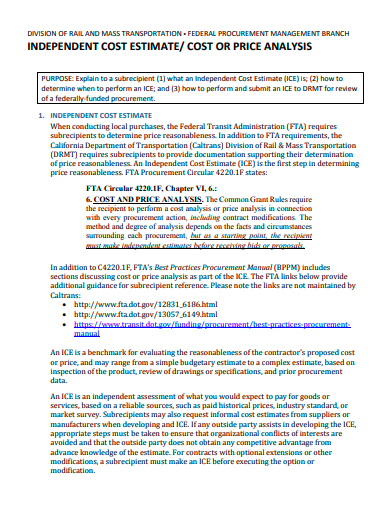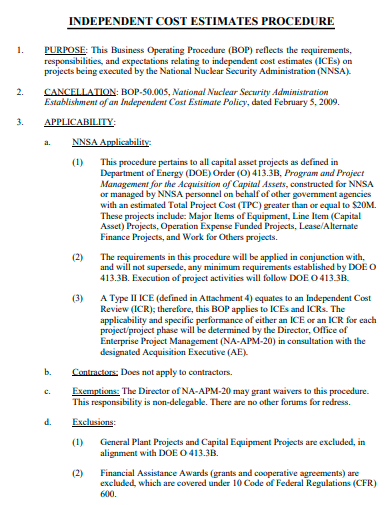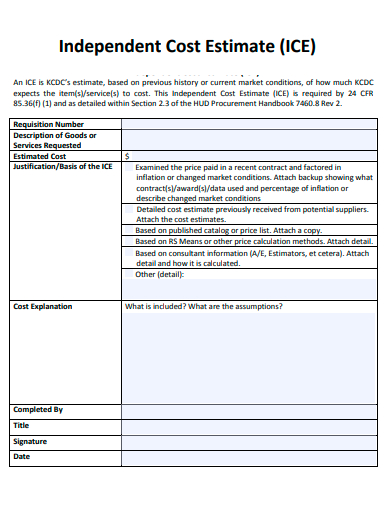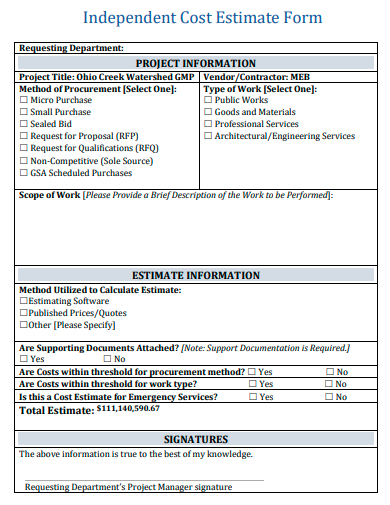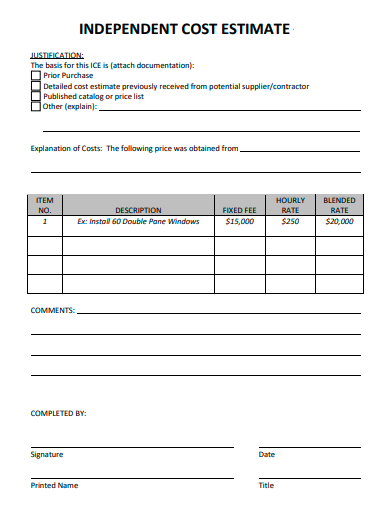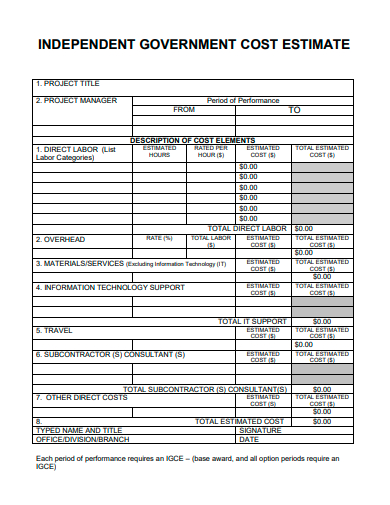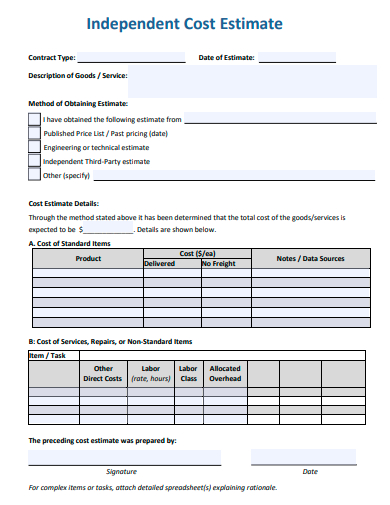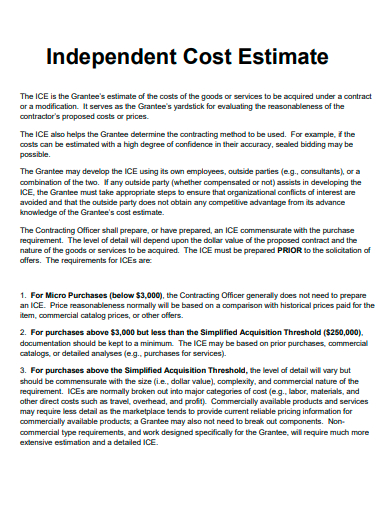Cost estimation is a part of a business’s project management plan and determines whether a business plan is a success or not. It is the process that accounts for direct costs, indirect costs, and other factors to calculate a project plan budget that meets the financial requirements of a company project. Strategic planning for project cost estimation can be applied to any project such as the construction of bridges to being a part of a software development plan.
FREE 10+ Independent Cost Estimate Samples
1. Independent Cost Estimate Template
2. Basic Independent Cost Estimate
3. Standard Independent Cost Estimate
4. Independent Cost Estimate Procedure
5. Formal Independent Cost Estimate
6. Independent Cost Estimate Form
7. Independent Cost Estimate Example
8. Independent Cost Estimate Format
9. Independent Government Cost Estimate
10. Sample Independent Cost Estimate
11. Independent Cost Estimate in PDF
What are Independent Cost Estimates?
The independent cost estimate is the term that refers to the engagement of professional services that are not affiliated with an organization or company to perform a detailed estimation of a new business proposal’s costs. This process was designed to assess the cost of a company project and provide an objective view of the proposed project’s costs while also delivering transparency on the project. With an independent cost estimate, a company can determine whether to use independent professionals rather than their in-house estimators.
How to Create an Independent Cost Estimate
One of the most challenging aspects of project management is collecting all the necessary materials and manpower as well as setting a budget plan that keeps the project costs to a minimum without compromising the quality and project scope. With an initial cost estimate, you and your team can determine whether you can proceed with the new project and if it will deliver consistent progress as well as define the scope of work of the project.
Step 1: Determine the Purpose of the Independent Cost Estimate
Before proceeding to your calculations, determine first the purpose of the independent cost estimate, the required level of detail, who will receive the estimate, and the estimate’s overall scope. After defining the purpose, create a cost-estimating team, an outline of the estimation techniques they will use, their timeline, who will perform the estimation, and the schedule management plan of the team.
Step 2: Provide its Characteristics
Provide a description of the estimate’s purpose, system, and performance characteristics, including the technology implications, system configurations, schedules, strategies, and relevance to the existing systems.
Step 3: Choose the Appropriate Cost Estimating Strategy
Provide the definition of your work breakdown structure and determine an estimating method you use for each of its elements. Create a clear definition of what is included and excluded from the estimate, then identify the assumptions. You also have to develop a cost model and perform sensitivity analysis as well as risk and uncertainty analysis.
Step 4: Keep a Record of the Estimate
Make sure to keep a documented record of each of the steps you have performed to ensure that every team member is working on the same page. You can use this documentation when you brief your project stakeholders about the cost estimates when you get their approval. You also have to make sure to provide updates whenever there are changes to your cost estimate.
FAQs
What are the elements of a cost estimate?
There are two kinds of costs that are addressed in the process of cost estimation. These are the direct costs and the indirect costs. Under these categories are the common elements that are considered in cost estimation and these are the labor, materials and equipment, facilities, vendors, and risks.
What are the characteristics of an effective cost estimate?
An effective cost estimate has a clear definition of tasks, wide involvement in the preparation of estimates, availability of reliable data, standardized structures for the estimates, solutions for program uncertainties, recognition of inflation, excluded costs, independent review of the estimates, and revision of estimates in case of important changes on the program.
What are the different techniques for cost estimation?
The techniques you can use for cost estimation include analogous estimating, parametric estimating, bottom-up estimating, three-point estimating, reserve analysis, and cost of quality.
An independent cost estimate is a cost-effective method when completing a company project and conducting a detailed analysis and estimate of the possible cost of a project proposal. It is also used by businesses to encourage and promote transparency in the whole process. The independent cost estimate determines whether a client will proceed with the project or not.

